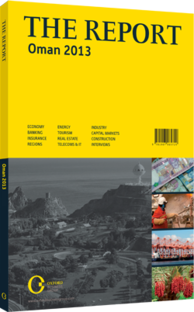Expanding the market: The introduction of sukuk should boost debt activity
When the news came in mid-October 2012 that the Capital Markets Authority (CMA) had finalised new draft regulations on the issuance of Islamic bonds, sukuk, this was greeted as an important step in the process towards the creation of a debt market.
Currently, that market is limited to a small number of conventional government and corporate bonds listed on the Muscat Securities Market (MSM), while many Omani corporate issuances have tended to take place abroad. When the CMA statement on sukuk regulations was issued, the MSM listed 27 government bonds, eight of which were active, and nine commercial bonds. The total value of the issuances, government and commercial combined, was OR1.69bn ($4.4bn), with OR640m ($1.67bn) of this being government bonds. The largest commercial placements are an OR75m ($195.45m) Bank Muscat subordinated bond from May 2009, with 2016 maturity and an 8% rate, and an OR43.16m ($112.477m) Renaissance Services five-year bond, issued in 2012 at 3.75%.
Market Growth
Expanding this market has long been a goal of the CMA and the Omani authorities. Indeed, an effort was made to open a debt market in the 1990s when the government began issuing development bonds, as and when the need arose. Thus there was no regular issuance, meaning the market could not mature, as such a programme was necessary for the establishment of benchmark and yield curves.
The success of a debt market depends on the perception that bonds can be a valuable way of raising finance. Traditionally, Omani companies have been family-based, with the financing of major new projects left to sources within the family or to the banks. With many of the large family groups, the view has tended to be that low-interest loans can always be negotiated with banks, thus obviating the need to go to the MSM.
Since 2006, there has been virtually no short-term government borrowing. High oil prices and sound fiscal management have left the state in a robust financial position, with little incentive for the Ministry of Finance, which deals with the issuance of government bonds, to go to the debt market.
Long-Term Plans
Yet such a market would offer considerable benefits to the sultanate. The Central Bank of Oman wrote a report on this in 2011, setting out a roadmap for the development of both a government securities market and a corporate debt market.
Regarding the former, the first important regulatory step will be the introduction of a public debt act. This can establish the roles of the different financial market authorities and government departments, the legal responsibilities of those involved and their judicial regularisation. An issuance calendar will also be laid out, with the IMF proposing that this initially be used to establish a market development fund that will ideally achieve the critical mass necessary to ignite a working debt market. Once that happens, a corporate debt market is much more likely to become fully established, according to the central bank’s roadmap. Still the calendar of government bond issues is yet to be fully implemented. While bonds have been issued every year since 2008, this has tended to be on an occasional basis.
Islamic Banking
Bond market advocates see a new opportunity for the establishment of a more vibrant debt market with the arrival of sukuk. This comes as part of the recent introduction of Islamic finance into Oman.
Two Islamic banks have already been set up, and conventional banks have also opened Islamic windows.
Regulations for Islamic insurance have been under public debate (see Banking chapter). The October 2012 draft regulations on sukuk have been eagerly awaited, particularly by debt market advocates.
The Islamic banks and windows, along with any future takaful(Islamic insurance) firms, will be seeking to gain assets that are compliant with the Islamic code, sharia, in order to build up their capital adequacy ratios.
These feelings are echoed in the industry. Ahmed Saleh Al Marhoon, director-general of the MSM, said, “With the arrival of Islamic finance and sukuk, I am very optimistic about the future of the debt market.”
You have reached the limit of premium articles you can view for free.
Choose from the options below to purchase print or digital editions of our Reports. You can also purchase a website subscription giving you unlimited access to all of our Reports online for 12 months.
If you have already purchased this Report or have a website subscription, please login to continue.

